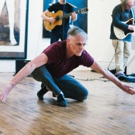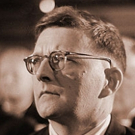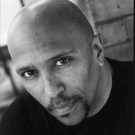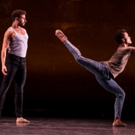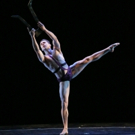Barnett Serchuk - Page 5

Writer/Interviewer--Broadwayworld Dance.
December 7, 2016
Entering its 30th anniversary year, Mark DeGarmo Dance is a not-for-profit that integrates three focal concerns: educate underserved New York City communities, especially children, through dance arts; create, perform and disseminate original dances, artistic and scholarly work; and build intercultural community. The organization's vision is to enliven bodies, shift perspectives and change lives. With programming that has been called 'a national model' by the National Endowment for the Arts, Mark DeGarmo Dance has maintained New York City Department of Education contracts for arts education services since 1987. MDD's artistic pillar in particular presents original artist-scholar works that reflect and celebrate the multicultural experience of our communities. Mark DeGarmo has created and produced over 100 dances and 28 international tours involving cultural diplomacy and exchange in 12 countries across Latin America and Europe. In 2015, DeGarmo received the Martha Hill Dance Fund's 15th Anniversary Mid-Career Award and the Sophie Gerson Healthy Youth Foundation's Recognition.
November 17, 2016
Nederlands Dans Theater 1 returns to New York with a 2016 season that includes four U.S. premieres by Sol Leon and Paul Lightfoot, Crystal Pite and Marco Goecke, running November 16 - 19, 2016 at New York City Center. Nederlands Dans Theater, under the Artistic Direction of choreographer Paul Lightfoot, is recognized as one of the world's most prolific and creative contemporary dance companies.The season features the U.S. premieres of Safe as Houses (2001) and Stop-Motion (2014), choreographed by Sol Leon and Paul Lightfoot; The Statement (2016), choreographed by Crystal Pite; and Woke up Blind (2016), choreographed by Marco Goecke.
September 8, 2016
Morgan McEwen, ballerina turned artistic director, launched MorDance in January of 2013. This young organization, with dancers from some of the world's most prestigious companies, has playfully leapt to the edge of the classical ballet world. MorDance explores the use of athleticism in its aim to modernize and innovate, while honoring the grace and beauty of classical ballet. MorDance premiered at Manhattan Movement and Arts center on May 3, 2013. That same year, Ms. McEwen was selected to choreograph on MorDance at Socrates Sculptural Park and again at the Counterpointe Project, which celebrated female choreographers creating dances on pointe. In 2014, MorDance helped the Sheen Center open their doors by being the first company to perform in their new black box theater. The following season the Sheen Center named MorDance their resident dance company. MorDance has also been granted space residencies at the Silo at Kirkland Farm and Mana Contemporary. Ms. McEwen has been commissioned to create works on Columbia Ballet Collaborative and will create a new work for Eglevsky ballet in 2017. She has also had a successful career as a ballerina dancing with the Richmond Ballet, BalletMet, the Metropolitan Opera, and freelancing across the country.
July 12, 2016
Sitting through BalletX's 10th anniversary season performance at Philadelphia's Wilma Theater on July 6, 2016, I was struck with some deep pangs of disappointment. It wasn't that the new works presented that evening were bad, quite the contrary. But how does one say that something more was expected, especially when reviewing a new Matthew Neenan production?
July 6, 2016
Alexei Ratmansky's 2015 version of 'Sleeping Beauty,' based on the Stepanov notation of the original 1890 version, as well as Diaghilev's production in 1921, has always posed a problem for me. I saw it last year with a friend, and our reaction was the same: why do we need this new 'Sleeping Beauty?' It's beautiful to look at, lavish to the extreme, but is there anything really new in this 'Sleeping Beauty' that we have not seen before? With every new version of this classic we want to see the choreographer's mind and heart at work; why was this warhorse tackled again? What speaks to the soul, how can the ballet literally take wings and have us fly with it? That is the problem with 'Sleeping Beauty.' For all its beauty, it remains earthbound. It's better to read about than view. History is indeed interesting, but not at these prices, especially if you're trying to build a new audience as the baby boomers are now in their sixties and moving on. Who will take their places at the ballet, especially at these prices?
June 16, 2016
"Balanchine and Beyond," the Pennsylvania Ballet's strangely named program that I saw Saturday, June 11, 2016 at the Merriam Theater in Philadelphia, was a very satisfying evening. Of course, beyond can mean anything, so the choice of Trisha Brown, Hans van Manen and Jean-Pierre Frohlich was a very strange, or very apt, combination, depending on how you view and take your ballet. So I decided, if this is what they are presenting, I'll sit down and enjoy myself. And, for the most part, I did.
May 31, 2016
A funny thing happened on the evening of May 22, 2016, at the Metropolitan Opera House, where ABT was presenting Alexei Ratmansky's 'Shostakovich Trilogy.' There were lots of empty seats. Since Ratmansky's reputation has pretty much enveloped the entire ballet world, I was very surprised to see this. On the other hand, an evening of three Shostakovich works can be enervating, putting high demands on the eyes and ears of an audience. Many might prefer to just stay away.
May 26, 2016
Tome Cousin is an interdisciplinary artist who has molded an award winning international career that includes collaboration and performance on Broadway, television, film, dance, theater, music, photography, and literature. He holds a Bachelors of Arts in Dance History and Choreography and a Masters of Fine Art in New Media Art and Performance. He is an Associate Professor of Dance at the Carnegie Mellon University School of Drama.
May 19, 2016
First things first. I'm not going to talk about the Pennsylvania Ballet and the company's negative press that's been besieging the dance world for the past few weeks. Any questions write or call Angel Corella, the Artistic Director. Let it come from him, not me.
May 11, 2016
Founder and Artistic Director of The Black Iris Project, Jeremy McQueen is an award-winning emerging choreographer. A 2013 recipient of the Joffrey Ballet of Chicago's Choreographers of Color Award and two-time finalist of the Capezio Award for Choreographic Excellence, McQueen's work has appeared at Jacob's Pillow Dance's Inside/Out series (in 2012 & 2013), Dancers Responding to AIDS' Fire Island Dance Festival, the Young Choreographer's Festival, and more. McQueen has appeared in the Broadway National Tours of 'Wicked' and 'The Color Purple', in addition to the Metropolitan Opera's productions of 'Die Fledermaus', 'Aida', 'Les Contes d'Hoffmann', and 'Don Giovanni'. McQueen currently teaches ballet for ABT's and Ailey's educational outreach programs. A graduate of The Ailey School/Fordham University B.F.A Program, he's trained as a scholarship recipient with American Ballet Theatre, San Francisco Ballet, and Alonzo King's LINES Ballet.
May 4, 2016
By my count, I've seen at least 250 productions in my lifetime, the last one in Australia. This, however, did not prepare me for Ballez's 'Sleeping Beauty & The Beast,' presented on Sunday, May 1st 2016, as part of the La Mama Moves! Festival. While this was meant to put a new spin on an old tale by gender bending mythical roles in the ballet canon, I have to admit that by the end I was neither surprised nor shocked into that feeling of astonishment when you witness something completely out of the ordinary.
April 28, 2016
To judge by Sunday's matinee on April 24, 2016, the New York City Ballet is in good dancing hands-shall I say excellent hands. If two of the three ballets that afternoon did not always meet the demands of the choreographic high level set forward by Balanchine, the dancing most certainly did. It was, to be understated, superb.
April 25, 2016
To judge by the film Reset (Releve)), which was recently shown at the Tribeca Film Festival, Benjamin Millepied, the soon to depart director of the Paris Opera Ballet, was a very lucky man. He could choreograph and commission works, construct innovative social media platforms and re-direct the school, along with dealing with entrenched hierarchies, bureaucracies, and all the other chies and cies that go with it.
April 21, 2016
We all know what it's like. You go to a performance that presents four different pieces, and by the end you swear that you've been seeing the same thing danced all night. It's like asking yourself: where did it start and finish, because you're in a Kafkaesque mode, and all you want is to be rescued into the realm of logic. Why exactly did the curators present this?
March 2, 2016
Olga El is a writer, director, and performance activist based in New York City. Her company, The Kandake Dance Theatre for Social Change, uses dance traditions from around the world to create socially relevant work and engage audiences and communities. This year is The Kandake's fifth anniversary, so I decided to ask Olga some questions about the company's unique foundations and where she thinks it may be headed in the future.
February 25, 2016
In the midst of some major illnesses and a deep depression, I was given Marsha Volgyi's new novel, 'The Crewmember,' to review. To say that it was just the antidote for my emotional state is an understatement; to say that I Iaughed out loud at least 500 times while reading the novel is doing the work a disservice. It was a wonderful journey on a cruise ship that propelled me into a state of near hysteria, and I don't laugh that easily.
January 6, 2016
Chris Alloways-Ramsey began his early training with Barbara (Olewine) Wouters, later completing his classical training with Mira Popovich and Dame Sonia Arova. He attended summer programs on full merit scholarships at Kirov Academy, School of American Ballet, Houston Ballet Academy, and San Francisco Ballet. Her graduated from high school at North Carolina School of the Arts with a focus in Ballet and received his A.L.B, cum laude, from Harvard University in 2003.
November 11, 2015
Entering New York University's Skirball Center for the Performing Arts on November 5, 2015, dancers from Troy Schumachers's group, BalletCollective, were already warming up on stage. You could feel the excitement in the air. All one had to do was scream 'go' and the dancers, high on performance octane, would have made a dash for it.
November 5, 2015
Frederick Douglass once described blackface performers as '...the filthy scum of white society, who have stolen from us a complexion, denied them by nature, in which to make money, and pander to the corrupt taste of their white fellow citizens.'
November 2, 2015
I wish I could have been more enthusiastic about the all-Jose Limon program on October 25, 2015, at 2 pm. It wasn't the dancers-just the repertory.
« prev 1 2 3 4 5 6 7 8 … 11 next »
Videos


